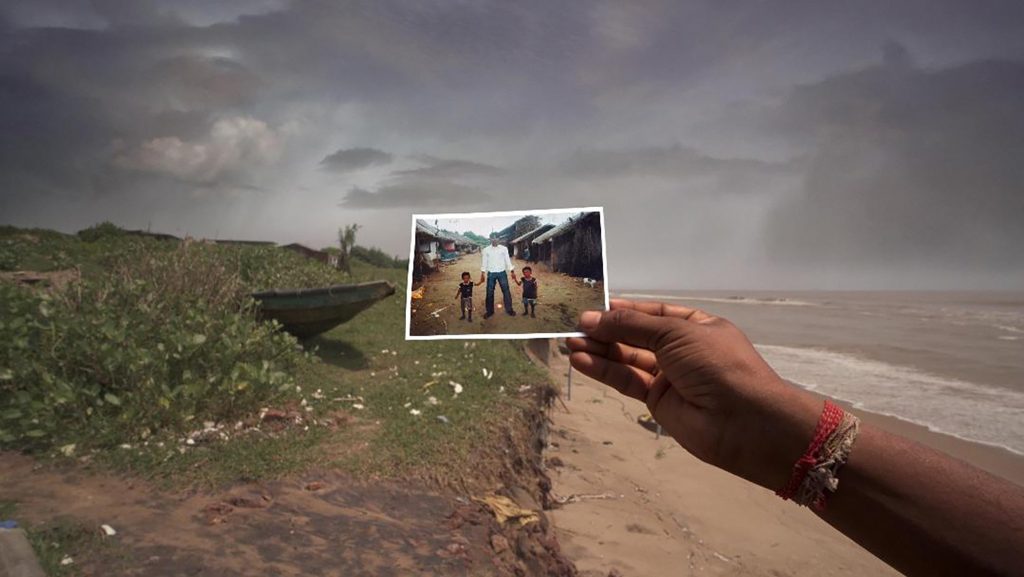Climate change and Global warming are not recent challenges faced by the whole planet and humanity. Human history remains a history of overcoming challenges and managing obscurity. Humankind is living in a crisis that can no prolonged be neglected. We all know about the changes we bring that impact our living space and destroy our earth.
Environmental essayist Bill McKibben wrote about climate change and brought the attention of the artist community to the subject of climate change. Mckibben wrote; we knew about climate change; we didn’t know about it; it wasn’t yet part of the culture. “Where are the books? The plays? The goddamn operas?” he asked (McKibben 2005), quoted by Christopher Volpe in his essay’ Art And Climate Change: Contemporary Artists Respond to Global Crisis. If nature is our culture, then climate is also part of our culture. Without nature, what do we make a culture of time and space, and who brings this climate change to this planet? Our culture is also making part of this.
Building a structure or gigantic statue or producing plastic waste as part of an ‘art show’ or artwork also matters for climate change. How could an artwork be part of this climatic change from the beginning to the end? Producing waste that harms nature is also part of art production when an artist creates an ‘artwork’ that makes waste.
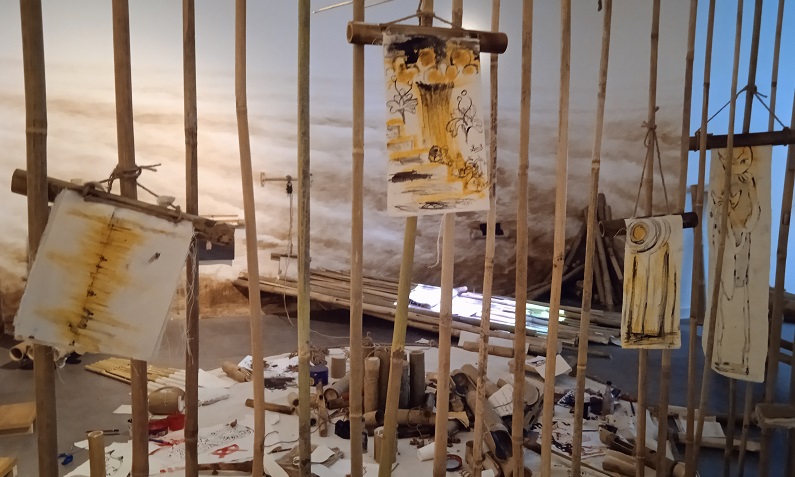
We all know we are no longer in a harmonious relationship with nature. What we destroyed starts to destroy us with their intense hand. The planet Earth gonna die with their inhabitant. Some scientists correct us with their wisdom; it’s not bad, but worse.
What is the artistic response to this matter? Now galleries and museums are announcing grants for doing climate change artwork. The Helen Frankenthaler Foundation and Asia Society in New York revealed a new sequel of $15,000 assistance for rising visual artists whose work “directly addresses the climate crisis is not first in this category. Climate change can change our life, then Art.
In Indian artistic practice and contemporary shifts of creative thought, climate change is a topic from Kerala to Orissa to the North-Eastern part of India. In this essay, bringing some artistic practices and environments of another kind and discuss the matter of climate change and contemporary Indian Art.
Khaal Gaon, an art project of Anga Art Collective, was designed as a laboratory for the collectivity of ideas, individual practices and observations, displayed in Kiran Nadar Museum of Art as part of a group show titled ‘Very Small Feelings’, as part of a fourth exhibition of the Young Artists of Our Times series brings the stories of Climate Change and Displacement from North-East India. In this project, the Anga team brought many elements from the Northeast, such as interactive vehicles, seeds, books, dried fruits and fish, drawings and drawing materials, dried chilly and many others, and discussed the lost village and the heritage of that village.
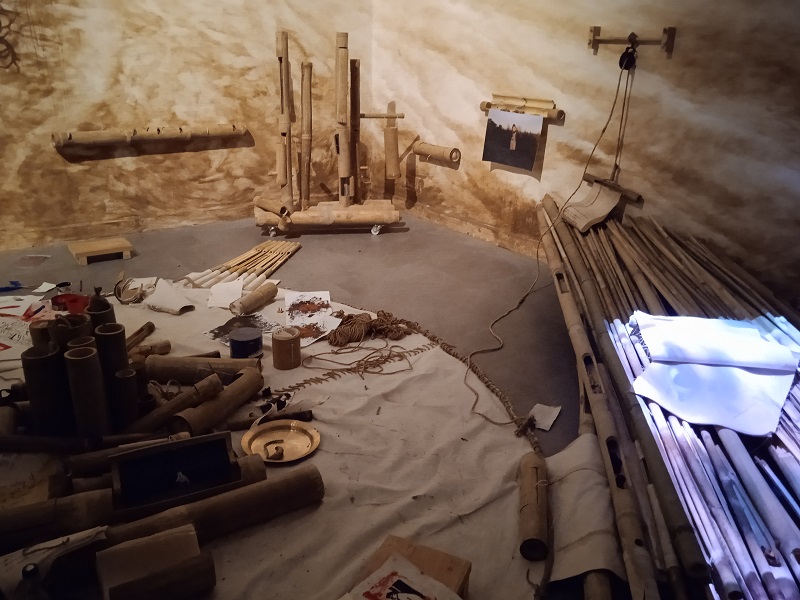 In Khaal Gaon, Anga Art Collective invites the audience’s interactions towards these objects and materials, which tell about North-Eastern life, nature, and art practice. Creating a sense interlinkage of visual and sensory stories, the Anga team conceptually developed this project to document a visual memory of their societal settings. When this project evolved, that interactive language and vocabulary of engagement between the audience and the object displayed in the show ripened.
In Khaal Gaon, Anga Art Collective invites the audience’s interactions towards these objects and materials, which tell about North-Eastern life, nature, and art practice. Creating a sense interlinkage of visual and sensory stories, the Anga team conceptually developed this project to document a visual memory of their societal settings. When this project evolved, that interactive language and vocabulary of engagement between the audience and the object displayed in the show ripened.
K R Sunil, Kochi-based documentary photographer and visual artist, exhibits his works related to Chavittu Nadakam in Sea, A Boiling Vessel, opened in Mattancheri Kashi Hallegua House entitled ‘Chavittu Nadakam: Story Tellers of the Seashore‘ brings diverse ideas together.
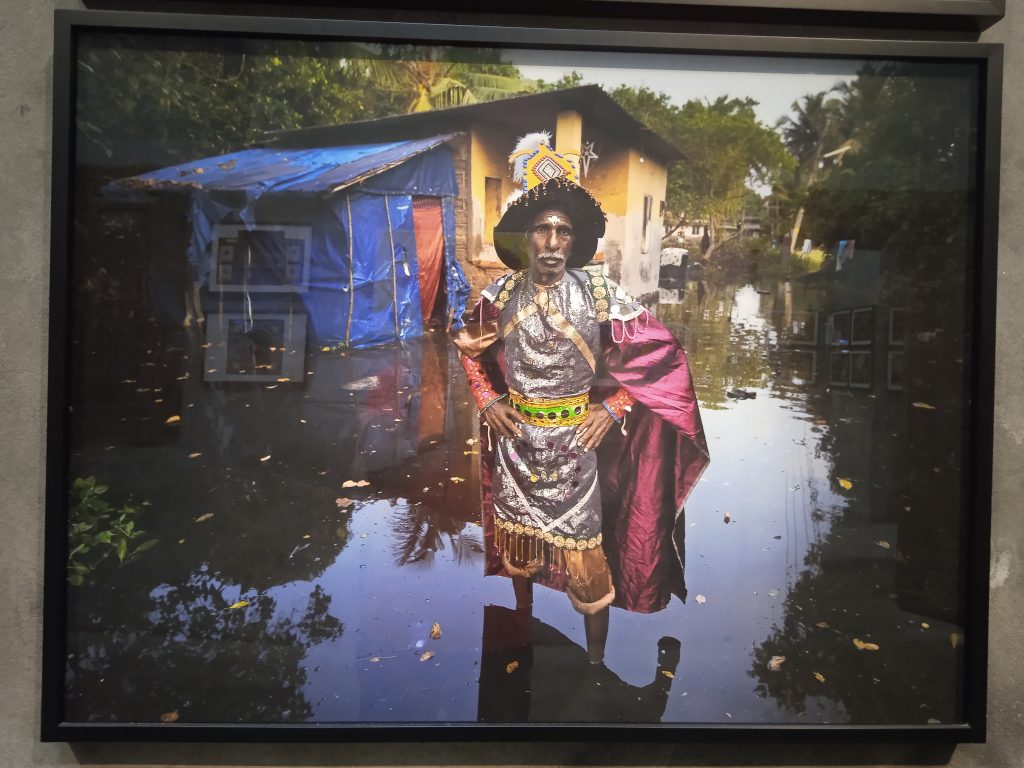
Courtesy- Krispin Joseph
KR Sunil’s projects about the Chavittu Nadakam allude to transnational performance elements active in a community in the coastal route of Kerala, historically connecting colonialism and seafaring engagements through the Arabian seacoast. Sunil captures Chavittu Nadakam actors in front of their tiny homes with magnific and elegant performance outfits. In this project, Chavittu Nadakam transcends concepts into pictorial representations; lives matters of the performers are the under-weaving element of this visual dialogue. In some images, Chavittu Nadakam performers stand in front of their houses engulfed by water, which carries us to other regions of social realities communed to them and us.
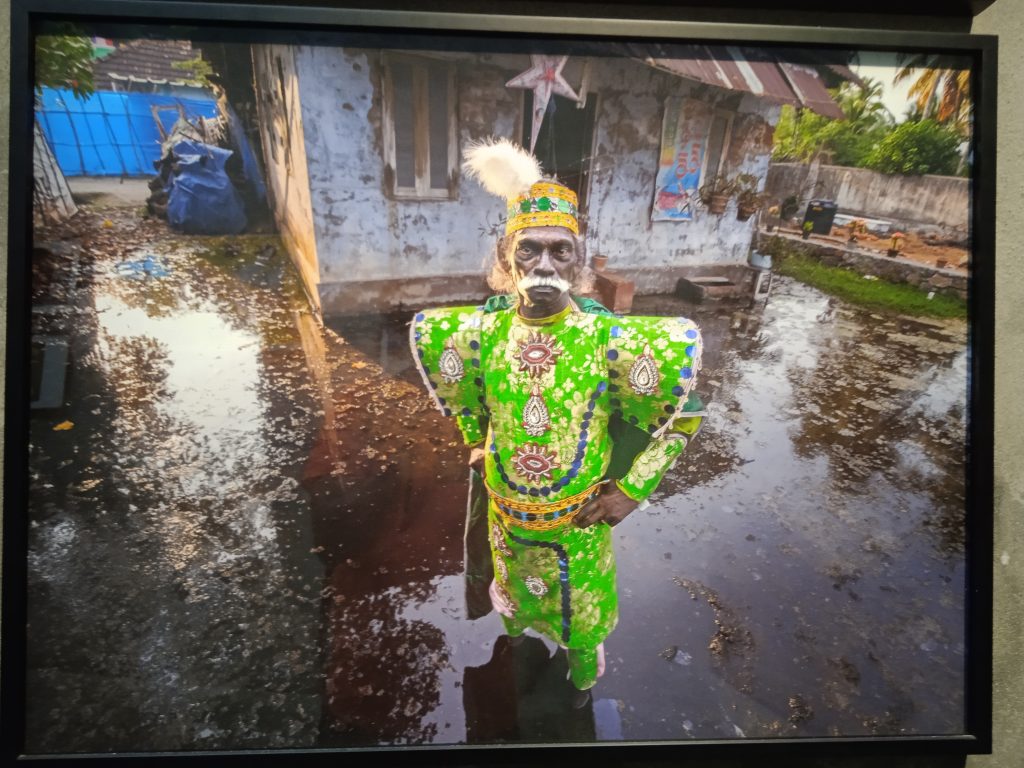
Courtesy- Krispin Joseph
One thing is performative practice, and people’s life, and the mixing of many traditions is the most significant scope of this project. Another one is climate change which affects not only these people, but artists use this project to bring that global issue in a visual platform. These people lived some days or months in a rehabilitation centre yearly during monsoon season. The coastal area where these people live is the most affected area of climatic change; the sea gradually erodes their homes and living space. They confront many things in their life, history gave them a performative layer, and now climatic disasters lead them to more marginalised locations.
Paribartana Mohanty, Orisa-born, New Delhi-based artist, touches on climate change from a new perspective and tells a story of a community displaced from the coastal area of Orissa. Paribartana Mohanty’s work,’ A Fate’s Brief Memoir’, displayed at the ‘Communities of Choice’ show in TKM Warehouse, Mattancherry, as a part of Kochi Muziris Biennale, presented by Chennai Photo Biennale and Ffotogallery, Wales collectively. A Fate’s Brief Memoir begins an investigation to uncover, observe, and document the missing community and study ‘traces’ that the fisher folks, as climate migrants, leave behind.
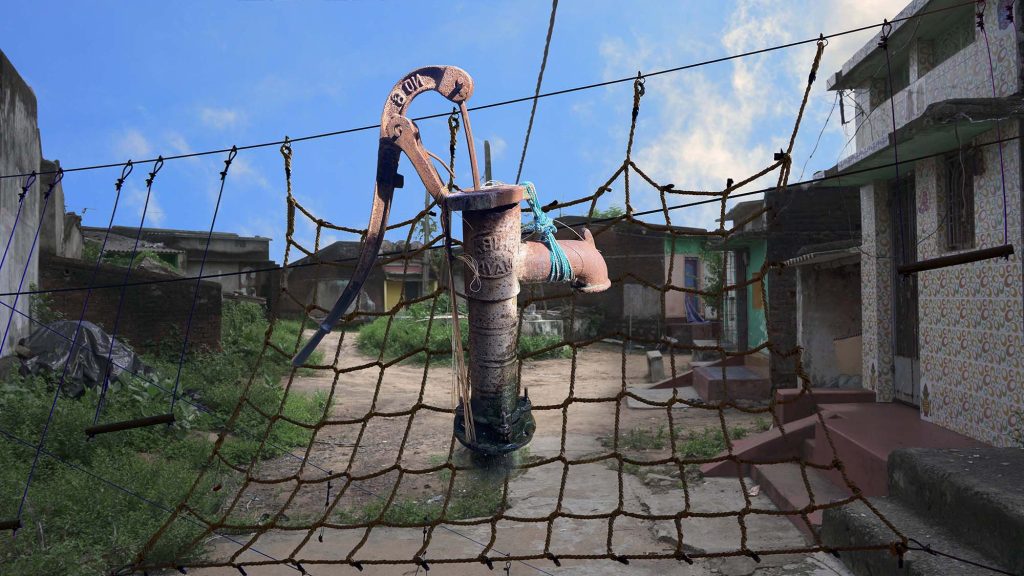
Repeated environmental issues in Odisha have turned the idea of ‘home’ into an insufficient and temporary concept; Nolias fisher folks (a unique marine fisher community classified as ‘scheduled-caste’ living at the coast of the Bay of Bengal in Odisha) have become eternal climate migrants. They are now surviving through ‘transits’. Transits encompassing inter-state borders, transportation, rehabilitation/shelter homes, new communication technologies etc., written in artistic statements.
Time and again, this transit apparatus is erasing traces that the Nolias leave behind. Paths that are manifestations or the only surviving register/evidence of this marginal community’s existence on this unstable surface of planet Earth.
Three art projects from different parts of India discuss the survival of communities belonging to the ‘lower class’ and caste. They are not privileged to raise their voice for their rights to live. The community from Kerala that performs Chavittu Nadakam, a fisherman community from Orissa and a farming community from the North-East part of India are facing the same problem of climate change. What is climate change is known to everybody. But, why only people from the lower class and indigenous community lost their land and life is also a matter. Above mentioned Individual- collective art projects bring the ideas of climate change and how that affected Indian society.
Carnivalised life and other stories of a performance: Click here
Khaal Gaon: Stories of Climate Change and Displacement from North-East India: Click here

Krispin Joseph PX, a poet and journalist, completed an MFA in art history and visual studies at the University of Hyderabad.

